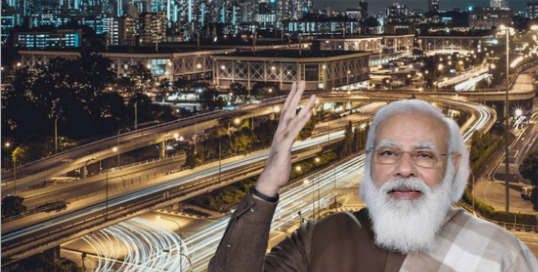The Modi government launched the much-awaited National Monetization Pipeline (NIP) to complement National Infrastructure Pipeline (NIP). The idea is to utilize the dead assets of the government to raise 6 lakh crore rupees and push this money into Infrastructure building through NIP.
“There is no land here, this entire (NMP) is talking about brownfield projects where investments have already been made, where there is a completed asset which is either languishing or it is not fully monetised or is under-utilised. So by bringing in private participation in this, you will be able to monetise it better and ensure further investment in infrastructure building,” said the Finance Minister.
The majority of the money would come by monetizing the assets under the Railways, Roads, and power ministries. And this money would be used to build similar things like roads, railways, telecom infrastructure, and so on.
The Modi government is making efforts to increase capital expenditure over the last few years. In the last union budget, capital expenditure was given a 34 % increase to reach above 5 lakh crore rupees. To further accelerate the capital expenditure, the National Monetization Pipeline has been launched.
“Asset monetisation is about utilising the existing asset base and using the proceeds for new infrastructure creation. Our objective is to enhance capex spending, resulting in a multiplier impact on growth and employment and reviving credit flow,” said Niti Aayog chief executive Amitabh Kant at the event.
In its first term, the Modi government built almost double the roads per year compared to the previous government. In the second term, the focus will be on connecting the parts of the country with cutting-edge infrastructure with a 102 trillion rupees infrastructure investment plan through National Infrastructure Pipeline. Indian Railways, which has gone through significant churn under the leadership of Piyush Goyal, is looking for investment worth 13 trillion dollars in the next five years.
Urban infrastructure like sewage, intra-city connectivity, low-income housing is set to receive 16 trillion rupees investment. Almost all the previous governments of India witnessed urbanization as a problem and tried to minimize the speed of urbanization through investment in rural areas.
But, the reality remains that, the cities are critical for economic growth, and therefore, urbanization needs to be managed, instead of being shunned. The 16 trillion dollars investment plan is a crucial step in the direction of well-managed urbanization.
Irrigation and rural infrastructure, which will help to improve farm income and end rural distress, is set to receive 8 trillion rupees investment.
The Modi government’s ambitious target to invest 100 trillion dollars in the next five years will help to achieve the 5 trillion GDP by 2024 goal. The precedence of China and other East Asian economies shows that investment in infrastructure is the most crucial factor for sustained economic growth.
And the money for building this infrastructure would come from monetizing the dead assets. The government would earn around 6 lakh crore rupees without selling a single thing, and invest this money in nation-building. Assets worth billions of dollars are lying idle for decades and now the government is putting it to better use. The investment in infrastructure would bring a virtuous cycle and ensure that the Indian economy grows at double-digit per annum in the ongoing decade.
